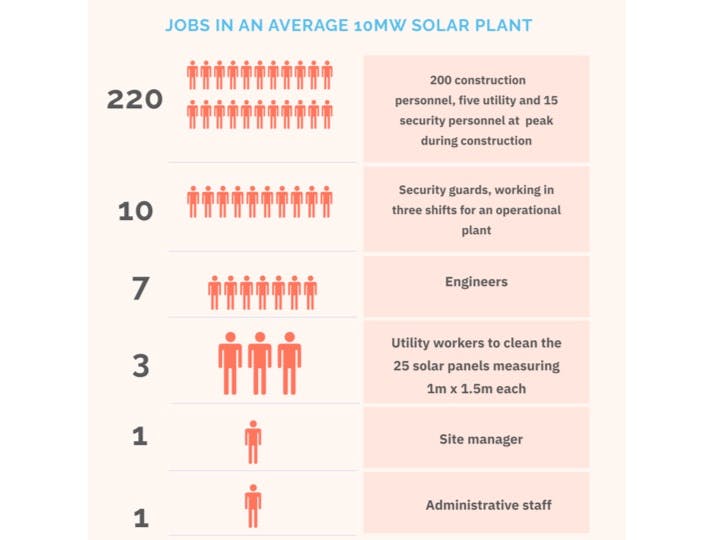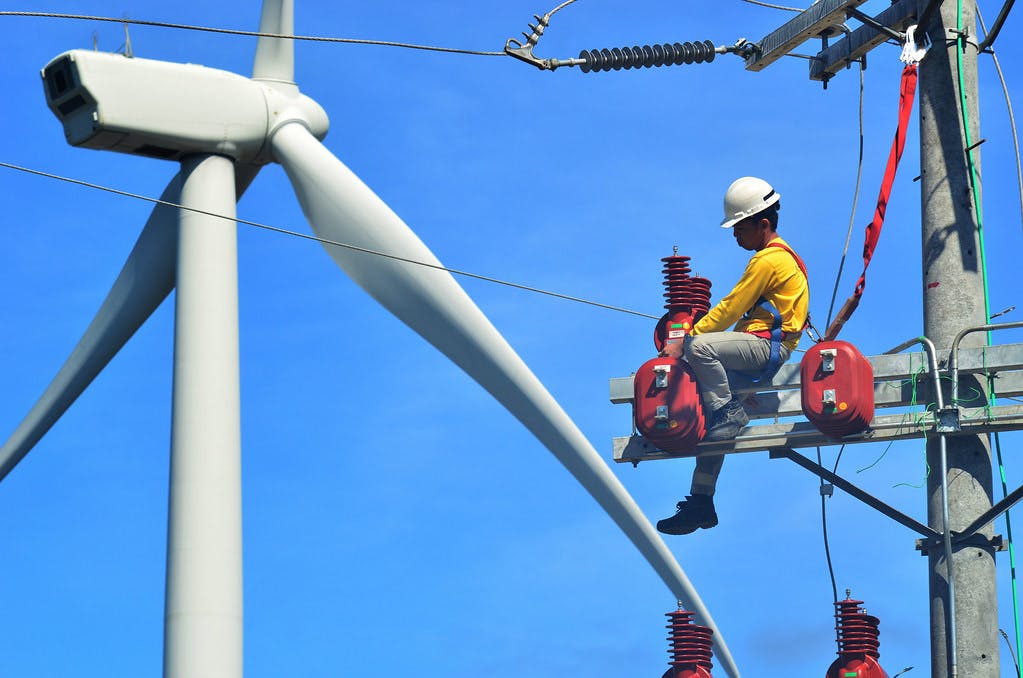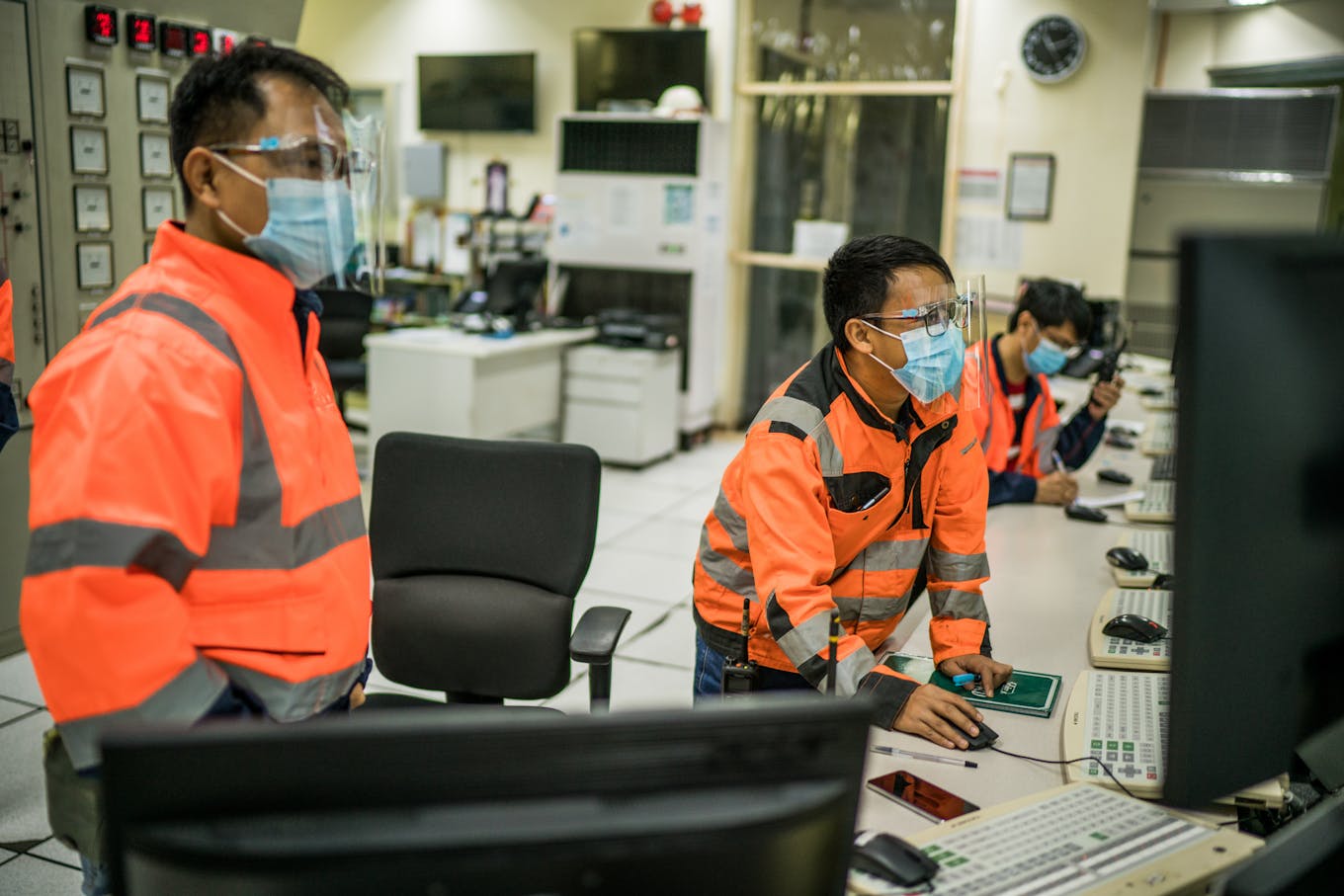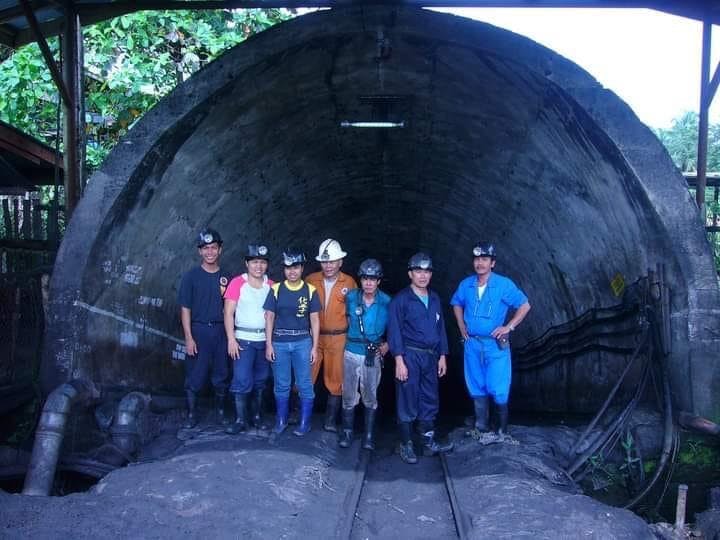When CleanTech Global Renewables, an independent power producer, started building its first solar power plant in Bulacan, Philippines in 2015, its founder Aboy Castro knew the risks that were coming with the venture.
Only a limited pool of experienced solar engineers was available in the nascent clean power sector at that time, and despite the country having one of the first renewable energy laws in Southeast Asia, local clean energy markets were hampered by hostile regulatory environments and unreliable power grids.
Enticed by the government’s feed-in-tariff incentive that year, which reduced taxes for renewable energy investors, Castro and his team forged ahead and developed the firm’s first utility-scale solar installation of 15 megawatts (MW).
Soon after, CleanTech applied for 342MW for projects in the Luzon island group of the archipelago, including the 22MW expansion of the San Ildefonso, Bulacan solar installation, the 20MW OneManaoag solar facility being developed in Santa Barbara, Pangasinan and a planned 100MW CleanTech Renewable Energy 4 Corp venture in Lal-lo, Cagayan province.

Source: CleanTech Global Renewables, Image: Eco-Business
“We expect a lot more jobs to be created over the next two to three years as development and construction ramp up,” Castro told Eco-Business.“There will literally be tens, if not hundreds of thousands, of jobs in construction of these renewable energy plants and possibly thousands of permanent jobs when the plants achieve commerciality.”
CleanTech’s initial project was completed within a year and provides electricity to 10,000 households.
Nearly five years later, Castro is confident enough to foresee a target of 1 gigawatt of clean energy installations by 2025.
“While there are inherent risks in any endeavor and there is always a chance of failure, we were never worried about us failing. Being in a sunrise industry like renewables is very exciting.”
CleanTech is one of the 525 renewable energy companies in the country trying to meet a rising demand for jobs in the local renewable energy sector.
Global think-tank Institute for Energy Economics and Financial Analysis (IEEFA) estimates that the Philippines will generate some 350,177 renewable energy jobs if all capacity in the current pipeline is successfully deployed by 2030.
The government announced in October that it would no longer be approving applications of new coal power plants. The IEEFA reckons that the new policy could help bring US$30 billion worth of clean energy projects onstream by 2030.
“The result of the coal moratorium could be an addition of at least 212,145 renewable energy jobs during the project’s construction to the existing jobs, and 31,595 new jobs in operation and management of clean energy capacity,” said Sam Reynolds, IEEFA’s energy finance analyst. IEEFA’s estimates are based on the number of people employed per MW in each sector, Reynolds said.
Geothermal is currently the largest employer in the renewables space requiring 25 people for every MW during construction, resulting in a total of 50,899 jobs as of 2020.
There are 11,540 people employed by solar power plants but if the planned 11,190MW worth of installations pushes through in the coming decade, employment is poised to be the biggest in the green energy sector with 151,748 jobs available by 2030, according to IEEFA.
Wind currently employs the fewest people (4,240), but if its 4,324MW capacity in the pipeline is deployed by 2030, the number of jobs could climb to 47,181.

A technician at the Burgos Wind Farm in Ilocos Norte, Philippines. Wind may have the fewest jobs in the renewable energy sector today but if its entire pipeline capacity could be deployed by 2030, the number of jobs could swell from 4,240, to 47,181. Image: ADB
A renewables boom may provide a safety net for the 27,858 coal plant workers whose jobs could be in jeopardy as Asia’s governments come under pressure to implement clean energy policies and limit new coal investments.
Job creation in the coal sector is likely to lag following a government ban on new coal projects. A thriving renewables industry could mean an exodus of workers to the clean energy sector, said Reynolds.
“This job projection ultimately depends on the energy mix and renewable energy deployed over the next decade. But using the most conservative figures among the asset classes from the department of energy’s own estimates, the full implementation of the coal moratorium could have substantial benefits in terms of job creation for the Philippine economy,” Reynolds told Eco-Business.
The coal moratorium: ‘Vague and misaligned’?
The Philippines’ energy chief Alfonso Cusi announced on 27 October 2020 that the government will no longer approve applications for the new construction of coal-fired power plants. The moratorium was based on a review of the country’s energy requirements, which sought a “resilient and flexible” power mix amid the Covid-19 pandemic.
The Southeast Asian nation is projected to have the highest share of coal in the power mix for the region in 2030, and the new policy could choke off about 10GW of coal in the pipeline.
The decision will not impact plants that are currently operating in the country, which imports 75 per cent of its coal, also limiting the impact of the policy on coal miners.

The expansion of San Miguel Corporation’s 4x150 MW coal power plant in Limay, Bataan in 2018. A worker monitors the lifting of a pre-assembled tripper car to be used for carrying coal for burning, once the facility is completed. Image: SCHADE Lagertechnik
Rene Ofreneo, former dean of the school of labour and industrial relations at the University of the Philippines, does not think the coal moratorium will take effect unless the government makes a “clearer and more coherent” policy against the fossil fuel.
“I find the department of energy’s coal moratorium, energy plan and greenhouse gas reduction target all so vague and misaligned,” Ofreneo told Eco-Business.
“Even if there was an announcement of the policy, it is not supported by any dialogue with affected communities for a transition plan, nor has the country’s energy development plan been updated to include clear targets for renewable energy in the mix.”
Six months after the policy announcement, the Philippine government submitted to the United Nations its target to reduce harmful greenhouse gases by 75 per cent by 2030.
The target, known as the “nationally determined contribution”, was heavily criticised by activists as most of it is conditional on funding and assistance from the international community. It does not include detailed steps on how to meet its target, such as an outright ban on coal.
The latest draft of the Philippine Energy Plan, which charts the country’s energy landscape until 2040, has yet to reflect the moratorium and still proposes a significant share of coal in the energy mix at 58.9 per cent by 2030.
Coal remains more lucrative
Amid policy uncertainty in the coal sector, the job market appears to reflect the growing momentum behind renewable growth. A search this month on Southeast Asian recruitment portal Jobstreet.com for renewable energy jobs in the country results in about 90 available positions ranging from engineers to technicians to managers.
According to the website’s Philippine country manager, Philip Gioca, most job listings from 2019 to the end of 2020 were for solar engineers, with 45 openings, followed by solar technicians and electrical engineers.
There were only five openings in the coal industry for the same period.
“The solar industry gained momentum and market against the coal industry. During that period, the coal industry was limited, if not highly regulated,” Gioca told Eco-Business.
Hover over bars below to see average monthly wage and number of openings advertised in Jobstreet.com from 2019 to 2020.
However, the employment website’s data also showed that coal mining engineers earned an average monthly salary of US$714, slightly higher than their solar counterparts who receive US$673.
A coal handling field operator who performs manual tasks like maintaining equipment, sweeping, washing, cleaning and painting floors gets about US$422 per month. The closest equivalent in the solar industry are utility workers who mostly clean solar panels and receive an average of US$248.
“
Once [renewable energy workers] form their own trade unions, it will be a very important component in the overall energy transformation. It will ensure a just transition where workers’ rights and livelihoods are secured.
Gerry Arances, executive director, Center for Energy, Ecology, and Development (CEED)
Coal and ash handling superintendents, who supervise workers unloading, blending coal and delivering coal to ovens, take home some US$2,857 every month, averaging more than the US$2,450 monthly income of solar plant managers.
Hazard pay of about 15 per cent for workers in coal mining and geothermal could account for slightly higher earnings in these industries, with an additional hardship pay of 10 per cent available for people employed by coal companies.
Moreover, coal workers have trade unions which protect and advance the interests of its members, such as championing the case for better wages, says Gerry Arances, executive director of research institution Center for Energy, Ecology, and Development (CEED).
“The renewable energy industry still has a limited capacity now, but once they form their own trade unions, it will be a very important component in the overall energy transformation. It will ensure a just transition where workers’ rights and livelihoods are secured,” Arances told Eco-Business.
Geothermal offers limited opportunities
The geothermal sector is a promising industry for former coal workers to transition to, given the easy transfer of skills.
The Philippines, bedded in the so-called Pacific Ring of Fire, is the second-biggest global producer behind the United States of geothermal power, a form of renewable energy derived from the sub-surface of the earth. Geothermal power accounts for about 18 per cent of the country’s energy needs.

Engineers operate EDC’s Bacman geothermal power plants from a control room in the facility in Bicol, Philippines. EDC has geothermal sites in Leyte and Negros in the Visayas region, as well as in North Cotabato in Mindanao. Image: EDC
Filipino-owned, Energy Development Corp. (EDC), currently employs 11 former coal mine workers according to company figures. Most of them are engineers who are working onsite in geothermal power plants across the country, owned by the Lopez family conglomerate, while the rest are working in the head office in Metro Manila.
Edgardo Bacus, 62, was an electrical engineer for 10 years at the state-run Philippine National Oil Company Malangas coal mine in Zamboanga in Mindanao, Philippines, before he transferred to EDC’s geothermal plant in Bicol.
“
Geothermal is the easiest sector for former coal workers to shift to because the skills needed for drilling and exploration are similar.
Edgardo Bacus, former coal mining electrical engineer
Now retired, he recalls how he used to spend the entire day toiling in the underground mines. When coal deposits started running low in Malangas, he decided to follow most of his colleagues going to EDC where they continued working as electrical engineers. Instead of working inside the mines, exposed to health hazards and safety issues, they were comfortably above ground.

Edgardo Bacus with his former colleagues posing at the main shaft in the Malangas coal mine, sometime around 1990. Despite the hardship of working underground, Bacus says he has “no regrets” going into coal mining because it trained him well for his next job in the geothermal industry. Image: Edgardo Bacus
“Geothermal is the easiest sector for former coal workers to shift to because the skills needed for drilling and exploration are similar,” Bacus told Eco-Business.
“It was good training. After coal mining, all other energy-related jobs become easy. When I moved to geothermal, it was so much easier compared to my job in coal.”
Although it would be ideal for coal workers to transition to the geothermal industry, there are limited openings, according to Bacus. While the exploration phase might be intensive, fewer people are needed once operational.
IEEFA data shows that geothermal has one of the fewest projects in the pipeline among all renewable energy industries, representing a limited increase in employment in the sector by 2030.
A just transition?
Under the Philippine Green Jobs law enacted in 2016, government agency Technical Education and Skills Development Authority (TESDA) is in charge of crafting a human resources development plan as part of a “just transition” for workers, where they are not left in the cold as industries like coal become consigned to the past.
Coal power plant workers displaced by the moratorium may be retrained as solar roofing installers or construction workers who will retrofit buildings in compliance to green building standards, while coal workers in rural areas may venture into sustainable agriculture and agri-preneurship, said Mae Valdez, programme manager for non-profit Synergy Programme which promotes green jobs.
“
It is important that the government frames green jobs as something that anyone can do. Green jobs are not only for engineers; green jobs are for everyone.
Mae Valdez, programme manager, Synergy Programme
But before training workers for green jobs, the government must ensure that there are industries and businesses ready to employ them, Valdez said.
The green jobs law has a broader scope, according to Valdez, and should not just refer to green jobs as those found in the renewable energy sector.
“It is important that the government frames green jobs as something that anyone can do. Green jobs are not only for engineers; green jobs are for everyone,” she said.
Research institution CEED has criticised the green jobs legislation for focusing on assisting people in renewable energy jobs alone, neglecting workers being displaced in other sectors, including coal miners and ‘jeepney’ bus drivers.
A study released in 2018 highlighted how the law does not detail any transition plan for the 31,351 miners currently employed by the sector and the local communities that host retiring mining operations.
The livelihood of the Philippines’ jeepney drivers and at least 118,000 families depending on them are also at risk as the government’s public utility vehicle modernisation plan aims to electrify the country’s iconic form of public transport.
“A transition that does not consider the interests of the affected people remains just that—a transition. While a transition that ensures that all members of society, especially workers from transitioning or retiring sectors, are enabled and empowered to join the new low-carbon economy and society is a just transition,” the report reads.
“
Transformation must go hand in hand with transition.
Rene Ofreneo, former dean of the school of labour and industrial relations, University of the Philippines
Ofreneo, whose book on green jobs published in 2012 was used as reference material for crafting the country’s legislation, said that if the government was really serious about the just transition, it should sit down with big energy firms driving coal expansion in the country to lay out a transition plan for communities affected by the moratorium.
According to Ofreneo: “The problem with coal towns is that they are rich only when there is coal is burning. How will the workers and community prepare themselves when it stops? Transformation must go hand in hand with transition.”
This report was written and produced as part of a media skills development programme delivered by the Thomson Reuters Foundation. The content is the sole responsibility of the author and the publisher.











